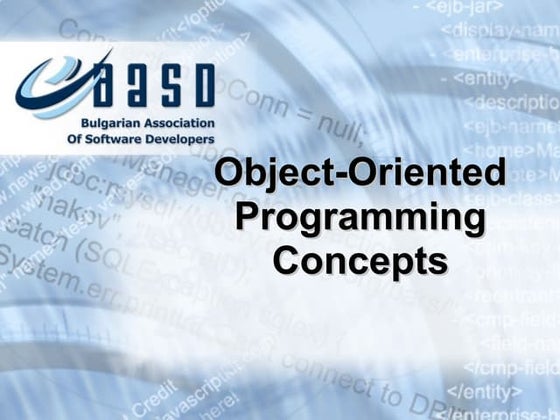Cake php concept to deployment
- 2. Who is this bloke? ŌĆó Graham Weldon ŌĆó PHP: 9 years ŌĆó CakePHP Core Developer ŌĆó http://grahamweldon.com ŌĆó Cake Development Corporation ŌĆó http://cakedc.com ŌĆó @predominant
- 3. ŌĆó Workshops ŌĆó Conference ŌĆó Learn from the core ŌĆó Presentations from core developers developers ŌĆó Get one on one support ŌĆó Community presenters for existing code ŌĆó Lightning talks ŌĆó Comfortable, easy to learn environment ŌĆó Prizes ŌĆó Cheaper than ever! ŌĆó Networking
- 5. Concept ŌĆó Software Requirements ŌĆó Impact Analysis ŌĆó Documentation
- 6. Concept ŌĆó Projects ŌĆó Sections ŌĆó Requirements ŌĆó Dependencies ŌĆó Tests
- 7. Concept ŌĆó Projects ŌĆó Sections ŌĆó Requirements ŌĆó Dependencies ŌĆó Tests
- 8. De’¼üning Standards ŌĆó Models ŌĆó Views ŌĆó Controllers ŌĆó Libraries ŌĆó Database
- 9. Standards: Models ŌĆó Class name: Singular ŌĆó Project ŌĆó SoftwareProject ŌĆó Filename: Singular (lowercase, underscored) ŌĆó project.php ŌĆó software_project.php ŌĆó Path: /app/models/
- 10. Standards: Views ŌĆó File name: Match Controller action name ŌĆó Path: /app/views/<controller>/<action>.ctp
- 11. Standards: Controllers ŌĆó Class Name: Plural ŌĆó ProjectsController ŌĆó File Name: Plural (lowercase, underscored) ŌĆó projects_controller.php ŌĆó Path: /app/controllers/
- 12. Standards: Database ŌĆó Tables: Plural (lowercase, underscored) ŌĆó projects ŌĆó software_projects ŌĆó Foreign Keys: Singlular (lowercase, id suf’¼üx) ŌĆó project_id ŌĆó software_project_id
- 14. User
- 15. User Project
- 16. User Project Project
- 17. User Project Project Section Section
- 18. User Project Project Section Section Section Section Section Section
- 19. User Project Project Section Section Section Section Section Section R
- 20. User Project Project Section Section Section Section Section Section R R R
- 21. User Project Project Section Section Section Section Section Section R R R R R
- 22. User Project Project Section Section Section Section Section Section R R R R R
- 23. User Project Project Section Section Section Section Section Section R R R R R
- 24. Baking
- 26. Models Representation of data, and provision of operations to be performed on data Controllers Views
- 27. Models Representation of data, and provision of operations to be performed on data Controllers Application ’¼éow control. Pass model data to views, prevent unauthorised access. Views
- 28. Models Representation of data, and provision of operations to be performed on data Controllers Application ’¼éow control. Pass model data to views, prevent unauthorised access. Views Output from application. XHTML, JSON, XML, etc.
- 30. Models $ cake bake model user $ cake bake model project $ cake bake model section $ cake bake model requirement Controllers Views
- 31. Models $ cake bake model user $ cake bake model project $ cake bake model section $ cake bake model requirement Controllers $ cake bake controller users $ cake bake controller projects $ cake bake controller sections $ cake bake controller requirements Views
- 32. Models $ cake bake model user $ cake bake model project $ cake bake model section $ cake bake model requirement Controllers $ cake bake controller users $ cake bake controller projects $ cake bake controller sections $ cake bake controller requirements Views $ cake bake view all
- 33. Models $ cake bake model user $ cake bake model project $ cake bake model section $ cake bake model requirement Controllers $ cake bake controller users $ cake bake controller projects $ cake bake controller sections $ cake bake controller requirements Views $ cake bake view all There are shortcuts for most things
- 34. Models $ cake bake model user $ cake bake model project $ cake bake model section $ cake bake model requirement Controllers $ cake bake controller users $ cake bake controller projects $ cake bake controller sections $ cake bake controller requirements Views $ cake bake view all There are shortcuts for Console help: most things $ cake bake help
- 35. Models $ cake bake model user $ cake bake model project $ cake bake model section $ cake bake model requirement Controllers $ cake bake controller users $ cake bake controller projects $ cake bake controller sections $ cake bake controller requirements Views $ cake bake view all There are shortcuts for Console help: most things $ cake bake help
- 37. Associations
- 38. Has One 1 .. 1
- 39. Has Many
- 40. Has Many 1 .. n
- 41. Belongs To 1 .. n
- 42. Has And Belongs To Many
- 43. Has And Belongs To Many n .. n
- 44. Has And Belongs To Many n .. n HABTM
- 45. Authentication
- 46. Alternate Content RSS, JSON, XML
- 47. Training
- 48. Training ŌĆó Beginners ŌĆó Cake Development Corporation ŌĆó Experienced users ŌĆó Employs most of the ŌĆó Code Review CakePHP Core devŌĆÖs ŌĆó Project Management ŌĆó Largest supporter of the CakePHP Framework
- 49. Thanks!












































































